From vision to reality: Exploring Saudi Arabia's Red Sea
The Red Sea is a pioneer in Saudi Arabia’s transformation into an alluring, all-encompassing tourism destination. As it becomes the first giga project to welcome guests, we discover why it’s been worth the wait…
I’ve been in Saudi Arabia for under an hour, and I’ve already seen craggy mountain peaks, rolling desert plains, and waters so impossibly turquoise I had to do a double take. Such is the vast and varied topography of The Red Sea, one of the world’s last remaining unspoiled landscapes. It is pioneering in many ways. As the first of Saudi Arabia’s ambitious giga projects to welcome guests, it sets the benchmark for others, including Diriyah, Sindalah, and Trojena, all of which will invite tourists to enjoy their take on experiential hospitality and luxury tourism in the coming years. But it also looks to set the standard for eco-tourism globally. It might feel like a juxtaposition, building an eco-tourism development on a natural island archipelago. But upon completion, The Red Sea project will see just 1 per cent of its islands developed, and the entire masterplan run off renewable energy. For now, only three of the 50 planned resorts are welcoming guests. That figure is set to sit at 16 by the end of 2025.
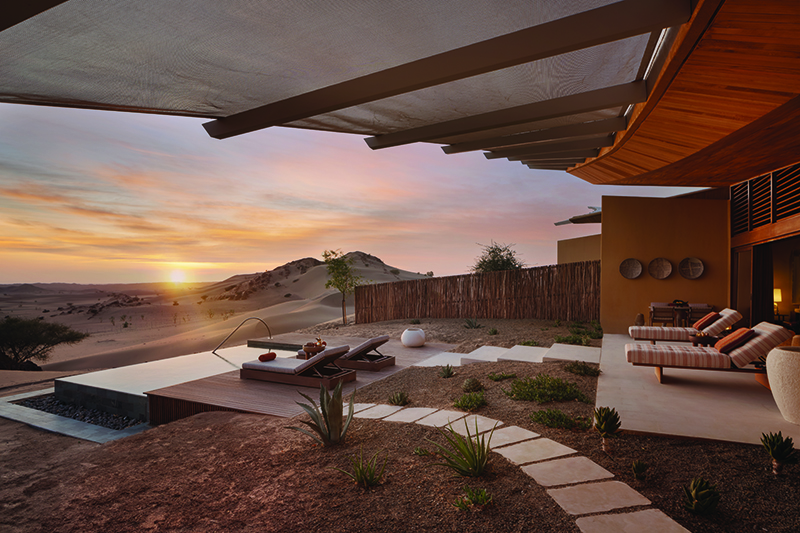
Six Senses Southern Dunes
Around an hour’s drive from Red Sea’s newly-opened airport, camouflaged in the endless landscape of the Khuff dunes on the outskirts of Umluj, is Six Senses Southern Dunes. It’s going to be one of only two in-land resorts in the destination, inviting travellers to trade azure waters for the flame hues of the rolling desert. Between spectacular views and the ultimate comfort of privacy, this destination remains relatively unknown, untouched, and enticing.
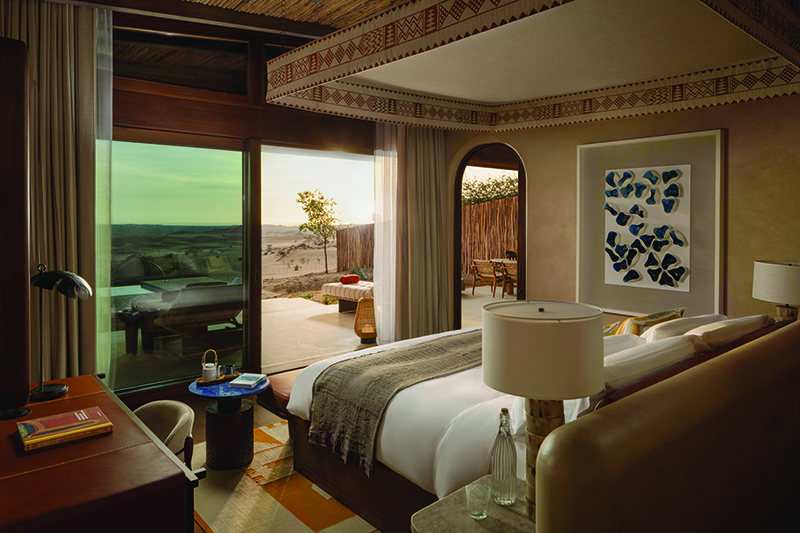
Six Senses Southern Dunes
The on-site offering of edu-tainment, wellness, and locally-inspired activities is a welcome reminder of what this destination is all about: showcasing the beauty and rich history of Saudi Arabia. At the Earth Lab, guests can enjoy hands-on workshops like soap-making from repurposed cooking oil, a cooking school where you can whip up Arabic dishes, and Chef’s Table. Nestled within the Oasis complex, you’ll also find four Artisan pods, each with a different experience – from a Sadu weaving activity and a majlis with a pool table to a 24-hour gelateria.
With so much beauty, authenticity and intrigue on offer, there’s little need to leave the property, really. But to make this journey to somewhere so remote and untouched, and not experience the Red Sea would be a mistake. Something I find myself thinking as I cruise the choppy Red Sea waters to the furthermost Ummahat Islands on the edge of the giga project, where a pair of luxury Marriott resorts, The St. Regis Red Sea and Nujuma, a Ritz-Carlton Reserve, unroll.
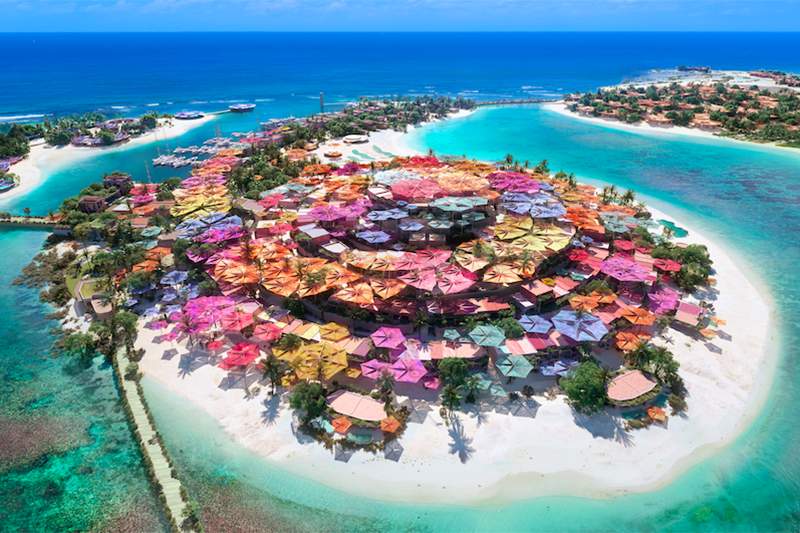
A render of Shura Island, which will open with 11 new hotels next year
On a scenic boat ride, we pass the under-construction Shura Island – where 11 resorts will open next year – and a handful of fishing boats, but the closer we get to the resort, the less we see. Calm ocean ripples melt into the gloriously blue sky, the horizon the only differentiator between the two. The resort unrolls against the entire almost 3km-long island, ringed by a pristine coral reef. The closest destination to compare it to would be the Maldives, but that doesn’t do it justice.
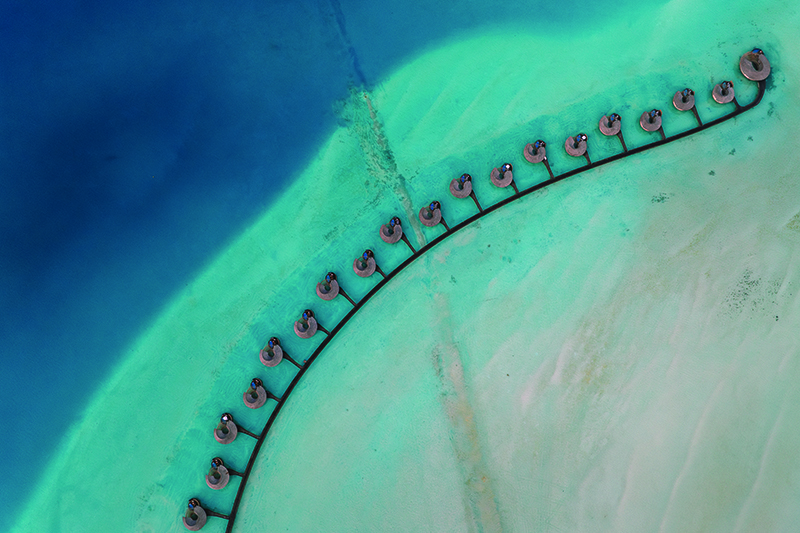
The St Regis Red Sea
The resort strikes the right balance between splashy St. Regis glamour and stripped-back natural beauty, and the result is a property that offers just the right amount of sophistication and style, while still allowing the local influence to shine through. Despite being on a remote island, some 300 species of flora have been landscaped into the island, which only adds to its beauty. But the real wow-factor in terms of natural features comes from the water that surrounds the resort, impossibly clear and shimmering a sensational turquoise blue. I find myself hypnotised by it one sunrise, watching as the golden orb rises into the sky, returning the dark water to its signature shade of crystalline blue as night turns to day.
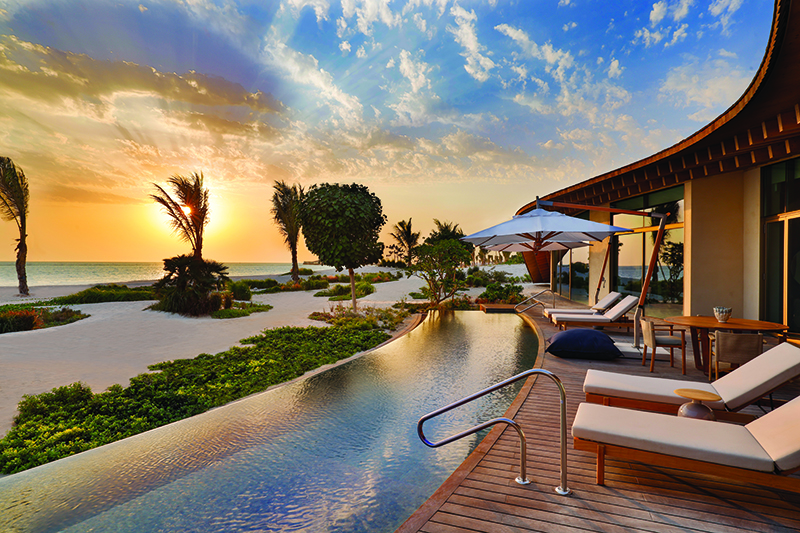
Sunset at The St Regis Red Sea’s Dune Villas
A spaciously laid out collection of 90 villas are divided between the beach (Dune Villas) and over water (Coral Villas), the latter of which come as both sunrise or sunset options. The Coral Villas over the water are the ones to book for true island allure, filled with oceanic notes from the endless shades of blue and white, to seashell shapes printed into the bathroom wall and a coral print carpet in the centre of the bedroom.
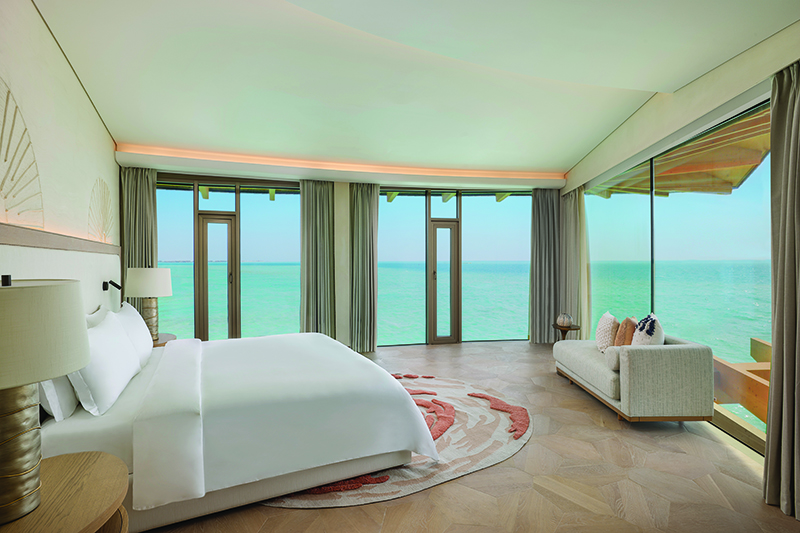
Bedroom in a Coral Villa
On land, days can be spent lazing at the beach club, getting pampered with locally-inspired treatments at the Spa, or simply cycling around the island admiring the scenery. But it’s the Red Sea waters that are truly unmissable, and so I join a snorkelling group one morning to tick it off my Red Sea bucket list. We life jacket up and board the boat, and once we’re out of the shallows of the resort, we speed over to Al Jadeer Reef, roughly 30 minutes from the island. The 22km reef is lined with nearly a dozen channels, and you can tell there’s something special about the reef before your fins even touch the water. As we sit on the edge poised to submerge, you can already see the corals reaching out from below the surface. Once we’re in, the true majesty of the reef is revealed. The first part of the reef is shallower, and we drift by shoals of colourful little fish. As we get deeper into the reef, the true diversity of this rainbow-splashed underwater world comes to life. Corals in cornflower blue, delicate violet and mustard yellow; fish in every colour – yellow, orange, turquoise, some with lightning stripes of blue, others with leopard prints, unbothered by our presence, go about their day along the reef.
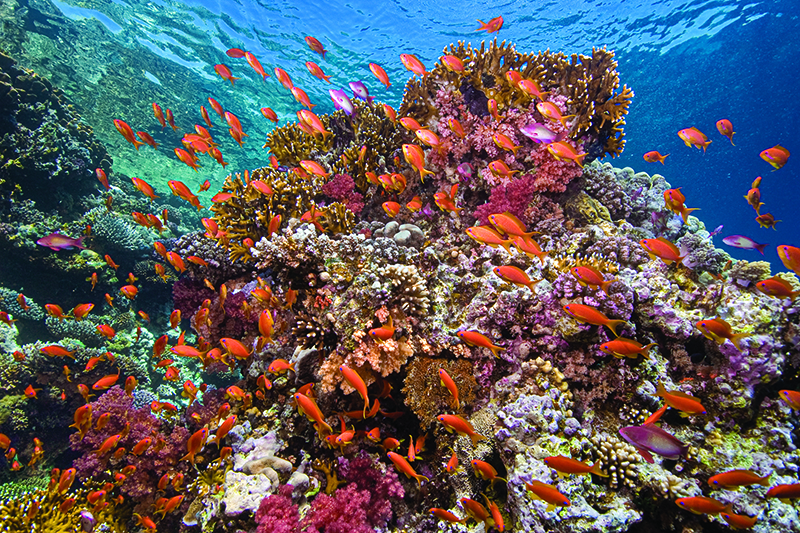
The rainbow-hued reef
We begin to head back to land, perfectly contented with our fill of aquatic life despite no sightings of turtles or rays that other guests were fortunate to see. Then our captain Abdulrahman takes a detour, having seen something in the distance. Going off course is rewarding – and a pod of almost 20 dolphins appear out of nowhere, happily jumping alongside the boat, racing us playfully across the Red Sea.
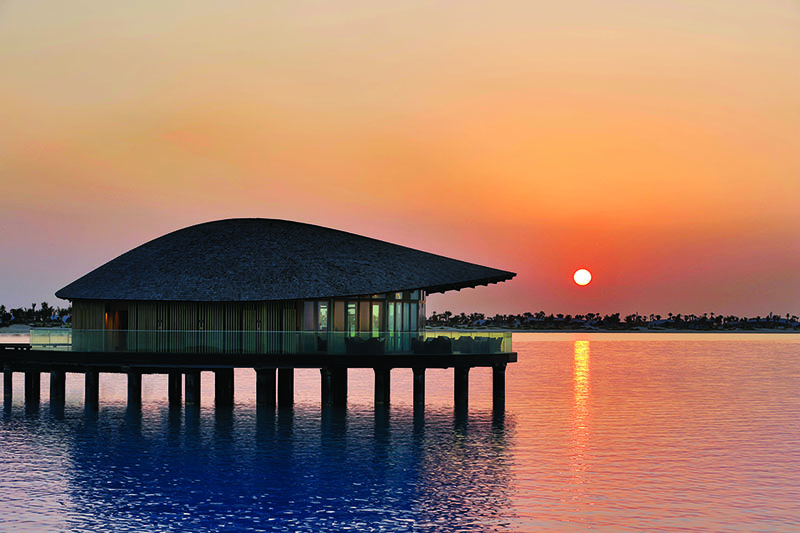
Tilina
That night, despite the cloudy skies, a convoy of ant-like buggies make their way to Tilina, the overwater restaurant and the destination for sunset sabrage, a signature St. Regis happening. A violin serenades us, a bottle of French Bloom is sabered, then glasses of alcohol-free bubbly are passed around to guests. Everyone seems satisfied with the subtle glow of pastel pink that dances on the horizon. Then it starts changing, the clouds that were previously concealing the sun begin to break, their streaks enhancing the sunset that starts to turn pink, then red, then yellow, then a glorious flame orange. It’s mesmerising.
Despite tourism being in its infancy in Saudi Arabia, there’s a genuine heart to the service that can’t be taught by an SOP manual, and only comes from a true passion for hospitality. The team are well versed in the St. Regis brand standards, my own butler Fuzail shares details on the daily happenings, the best sunset spots, and his favourite dishes at the resort’s Japanese eatery, Gishiki 45. But they also genuinely care that you’re having a good time. That’s evident both in the expats that work here, and even more so in the growing number of Saudis.
View this post on Instagram
One afternoon I’m treated to a preview of Nujuma, the third Red Sea Resort that is set to welcome guests just days after my visit. Over lunch at the breathtaking, sea-facing all-day dining restaurant, Sita, I talk to Salha Al Zalai, a Saudi national, who’s risen through the ranks and now leads the learning and development programme for both resorts. She talks animatedly about how local perceptions are changing, and not only being made easier – but also encouraged – for local men and women to take up roles in the hospitality sector. She echoes a sentiment I hear across both properties, of the pride Saudi people feel about being able to share their stories, their culture, and their land with visitors.
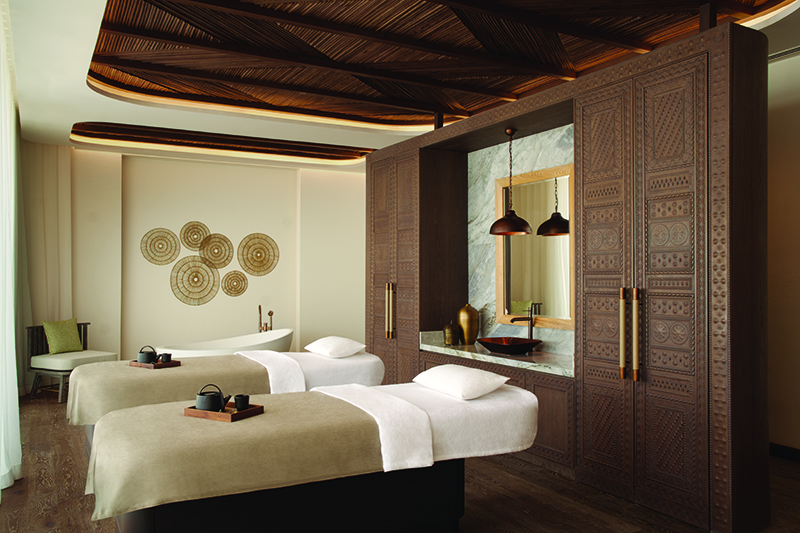
Neyrah Spa at Nujuma
Many of these stories are woven into the design details at Nujuma. A blend of Ritz-Carlton Reserve’s hyper luxury resort offering, laced with Saudi Arabian heritage and culture, the resort is dressed in an earthy, natural aesthetic, with shades inspired by the sand and sea. For dining, the past meets the present with an array of traditional Saudi Arabian flavours laced into the culinary offering. Much of the foodie action is housed around Sita, a sensational indoor-outdoor Middle Eastern restaurant that faces the ocean. But guests can also embrace an array of flavours at Mediterranean restaurant Jamaa; and seafood-focused Tabrah.
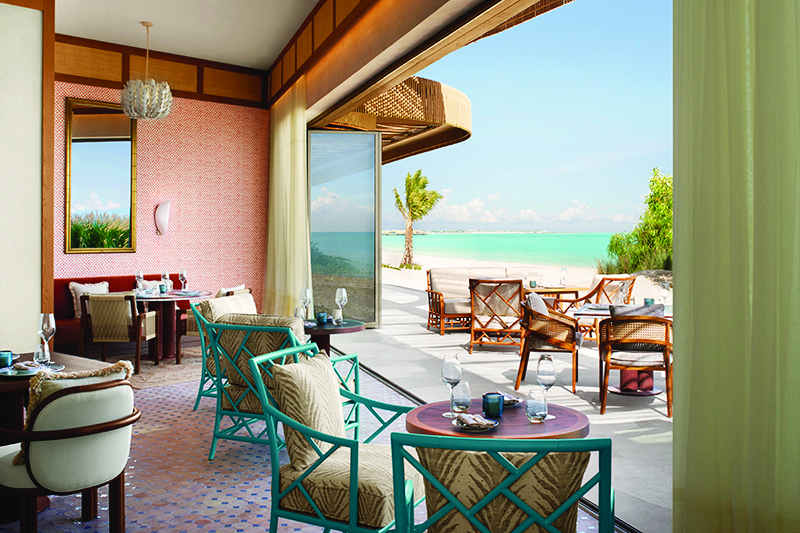
Tabrah at Nujuma
Edu-tainment is high on the agenda, and as such, a conservation centre offers insight into Saudi Arabian culture, community and environment through a breadth of inspiring and interactive activities. And inspired is exactly how I feel as I depart the Red Sea. By its natural beauty, by its intuitive service, and by its passion to challenge the perception of both luxury tourism, and Saudi Arabia.
Need to know
Flydubai flies direct to Red Sea International Airport (RSI) on Thursdays and Sundays. Fares start from Dhs3,000 return. flydubai.com
Rates for Six Senses Southern Dunes start from Dhs2,875 per night. @sixsensessoutherndunes
Rates for The St. Regis Red Sea Resort start from Dhs5,278 per night. @thestregisredsea
Rates for Nujuma, a Ritz-Carlton Reserve start from Dhs8,040 per night. @nujumareserve
Images: Supplied
